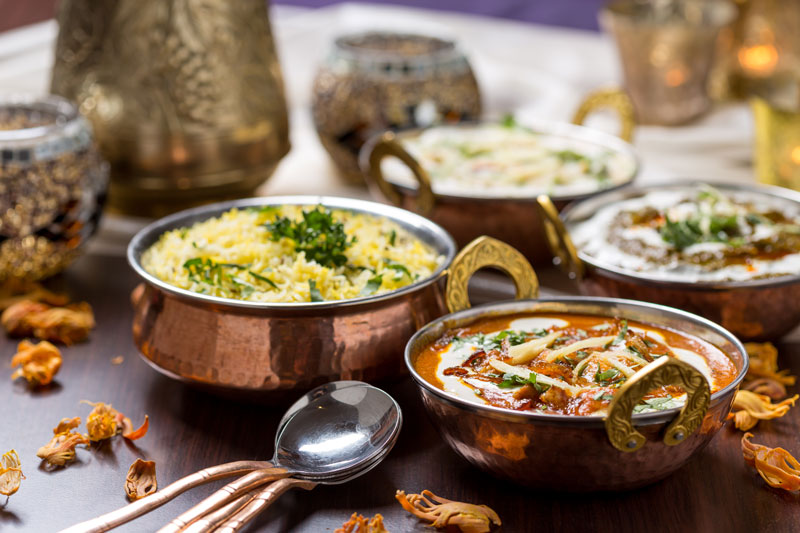Restaurants Llandudno serving Indian cuisine is a tapestry woven with a myriad of flavours, colours, and aromas. At the heart of this culinary richness lies a collection of intricate cooking techniques that have been passed down through generations. In this guide, we embark on a flavorful journey of the best indian restaurant through the artistry of Indian cooking techniques, revealing the secrets that make each dish a masterpiece.
Tandoori Magic: The Charcoal Kiss
The tandoor, a traditional clay oven, is the cornerstone of many iconic Indian dishes. Tandoori cooking involves marinating meats, vegetables, or bread in a blend of yoghurt and spices before cooking them at high temperatures in the tandoor. This technique imparts a smoky flavour and a distinctive char to kebabs, naan, and tandoori dishes.
Dum Pukht: Slow Cooking Elegance
Dum Pukht, a method of slow-cooking, involves sealing ingredients in a heavy-bottomed pot and allowing them to cook in their juices over a low flame. This technique enhances the flavours and textures of biryanis, kebabs, and rich curries, creating dishes that are tender, aromatic, and bursting with complexity.
Bhuna: The Spice-Infused Sauté
Bhuna refers to the process of sautéing spices, onions, and other aromatics in oil until they form a thick, richly flavoured base. This technique is integral to many Indian curries, imparting layers of depth and intensity to the dish. The slow and patient bhuna process is the essence of achieving the perfect curry consistency and flavour.
Tadka/Tempering: A Burst of Aromatic Essence
Tadka, also known as tempering, involves quickly frying whole spices in hot oil and adding them to a dish at the end of the cooking process. This technique infuses the dish with a burst of aromatic essence. Dal (lentil soup) and many vegetable dishes are elevated by the final touch of a well-executed tadka.
Chaunk/Baghar: Flavorful Finishing Touch
Similar to tadka, chaunk or baghar is the process of tempering spices, herbs, and aromatics in hot oil and drizzling the mixture over the finished dish. This technique is often employed in dals, chutneys, and lentil-based recipes, enhancing the overall flavour profile.
Kadai Cooking: Stirring Up Flavor in a Wok
Kadai cooking involves using a deep, thick-bottomed wok called a kadai. This versatile technique allows for quick stir-frying or deep-frying, resulting in dishes with a delightful combination of textures. Kadai paneer and kadai chicken are prime examples of this cooking style.
Charring or Roasting: Enhancing Earthy Flavours
Charring or roasting over an open flame imparts a distinct earthy flavour to ingredients like eggplants, bell peppers, and tomatoes. The roasted ingredients are then used to create dishes like baingan bharta and roasted tomato chutney, offering a smoky and intense flavour profile.
Steaming in Banana Leaves: Aromatic Elegance
In South Indian cuisine, steaming in banana leaves is a traditional technique that imparts a subtle, aromatic flavour to the dish. Idlis and patra (steamed colocasia leaves) are classic examples of dishes crafted using this delicate and aromatic steaming method.
Indian cooking is an art form that embraces a multitude of techniques, each contributing to the symphony of flavours that define the cuisine. From the earthy char of tandoori dishes to the slow-cooked elegance of Dum Pukht, every technique adds a layer of complexity and depth to the dishes. As you explore the world of Indian cuisine, embrace the artistry of these cooking techniques, and let each bite tell a story of tradition, flavour, and culinary mastery.



